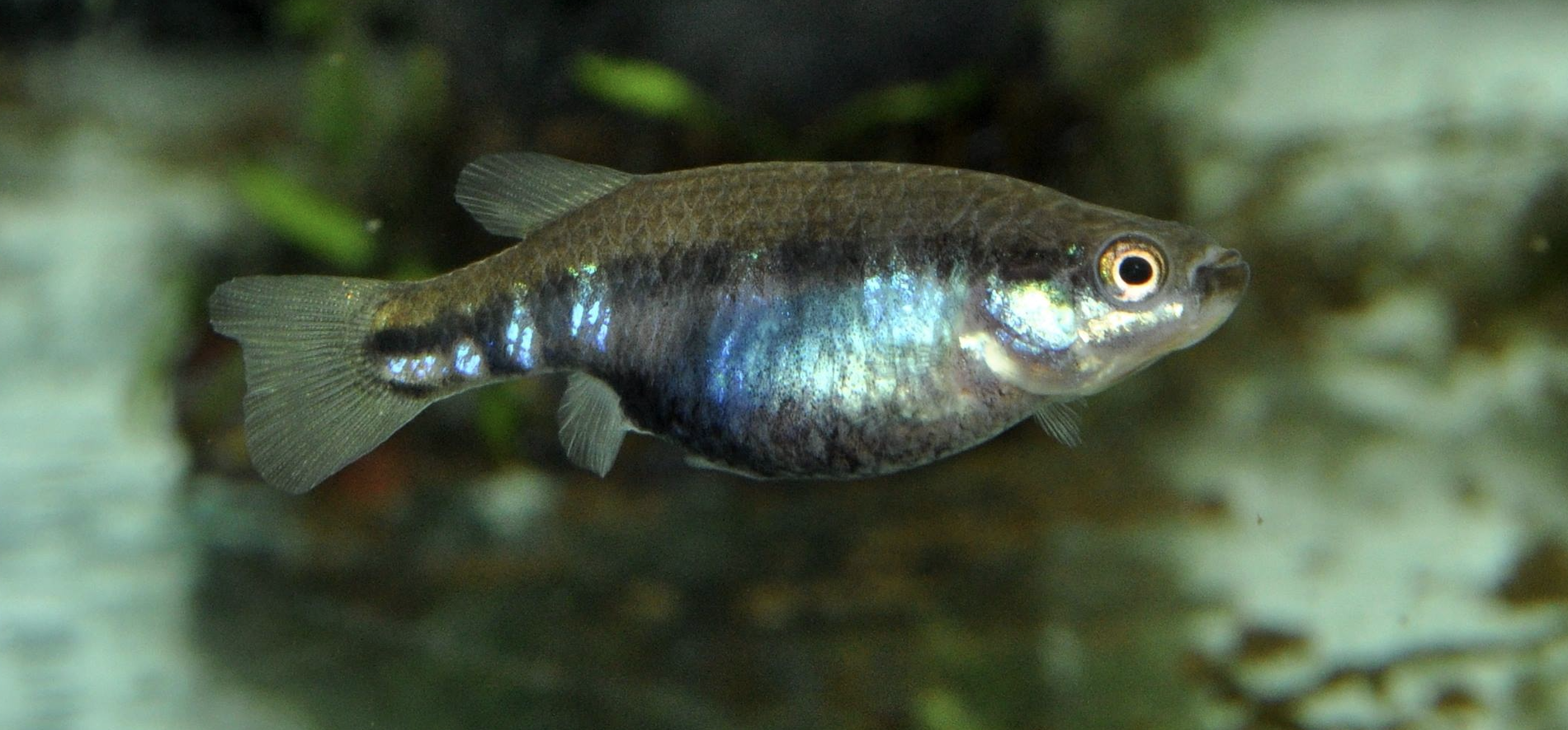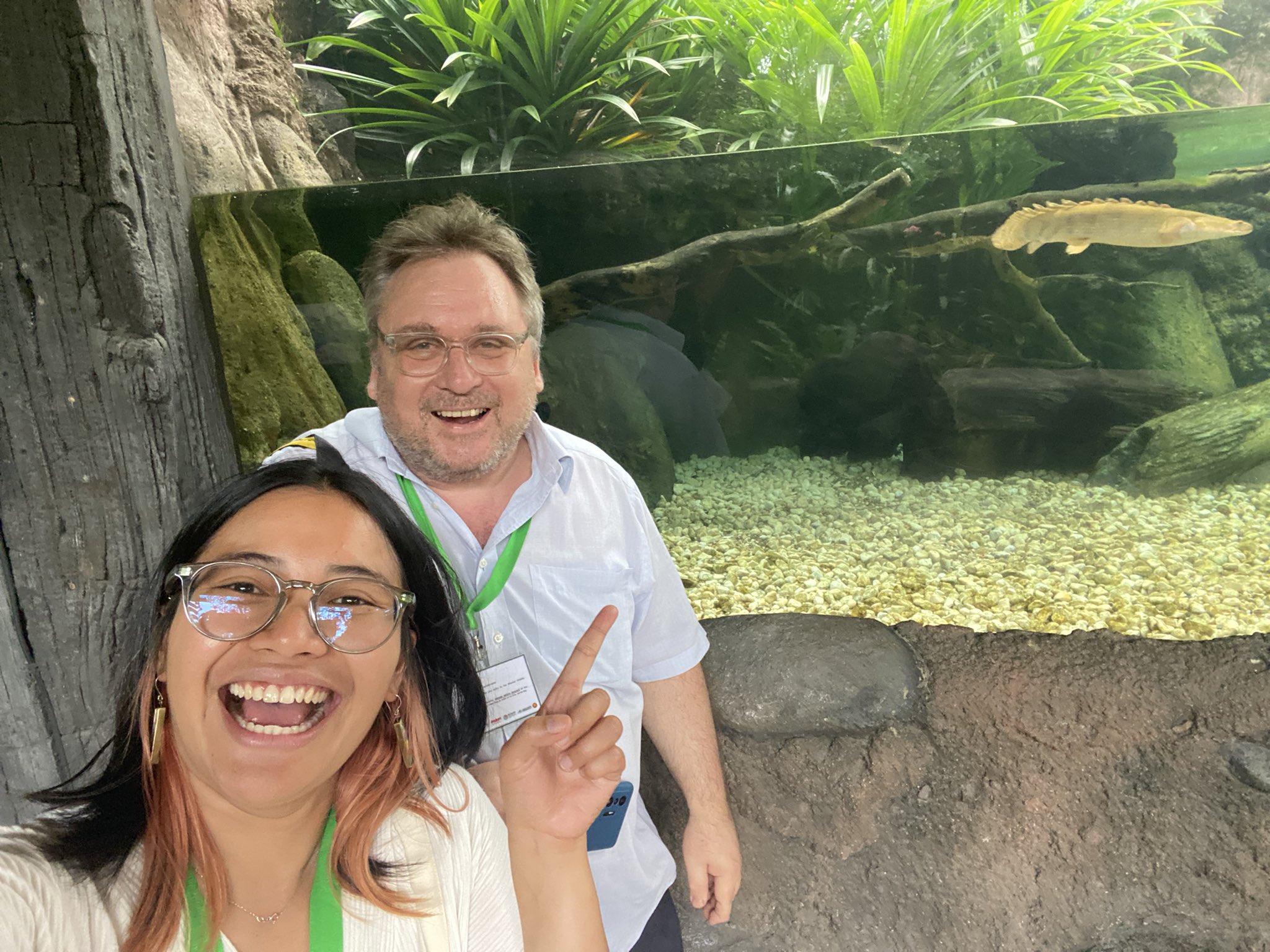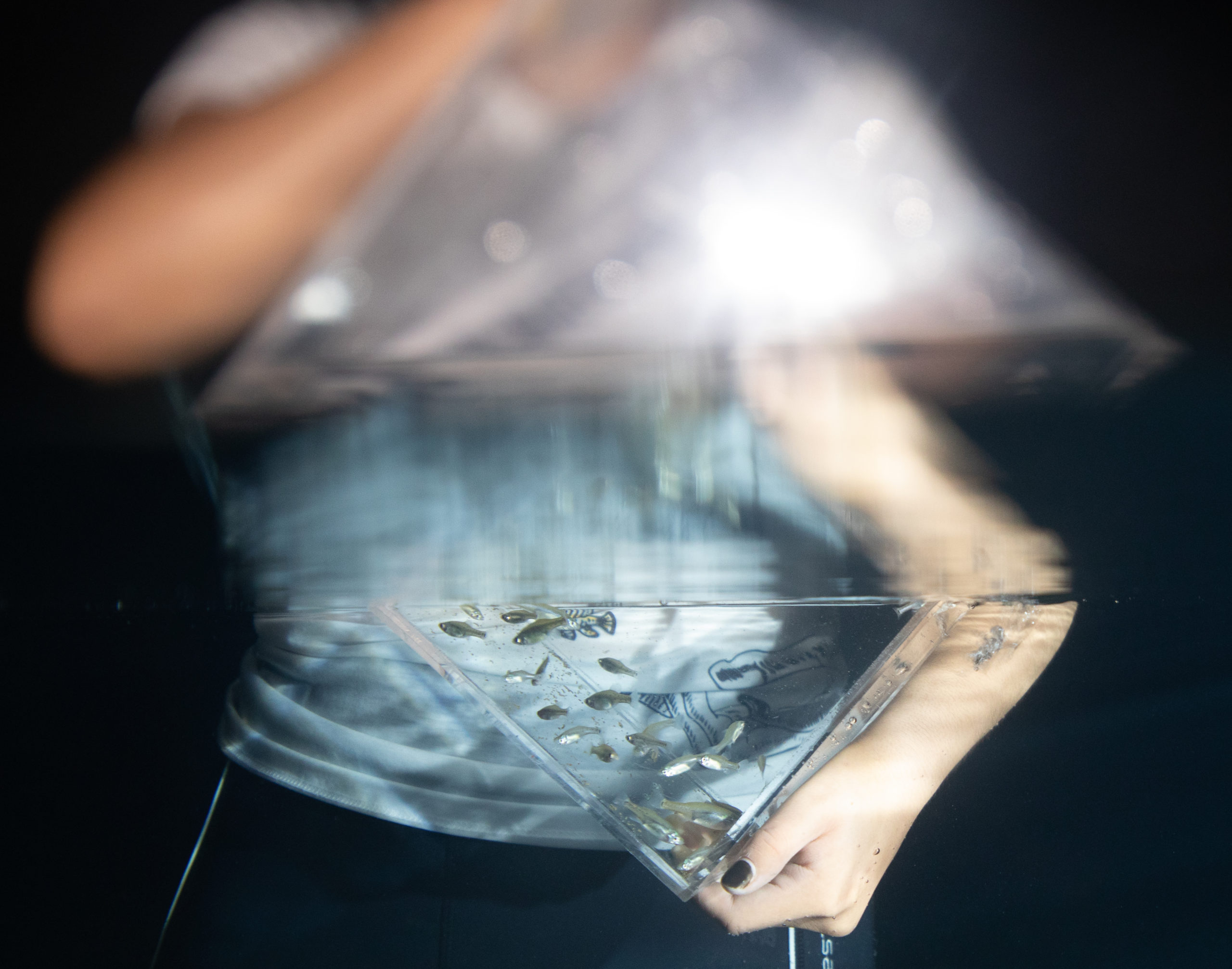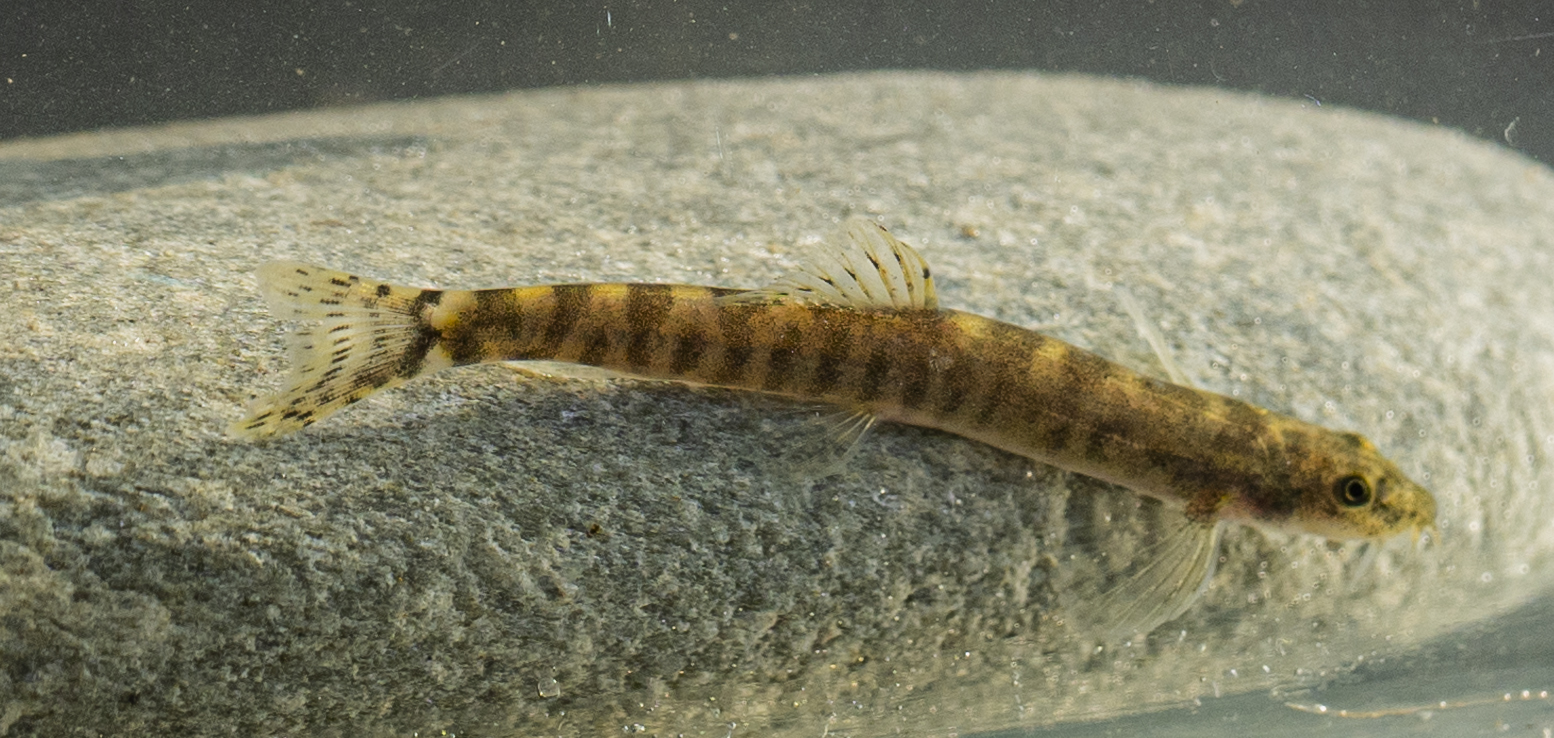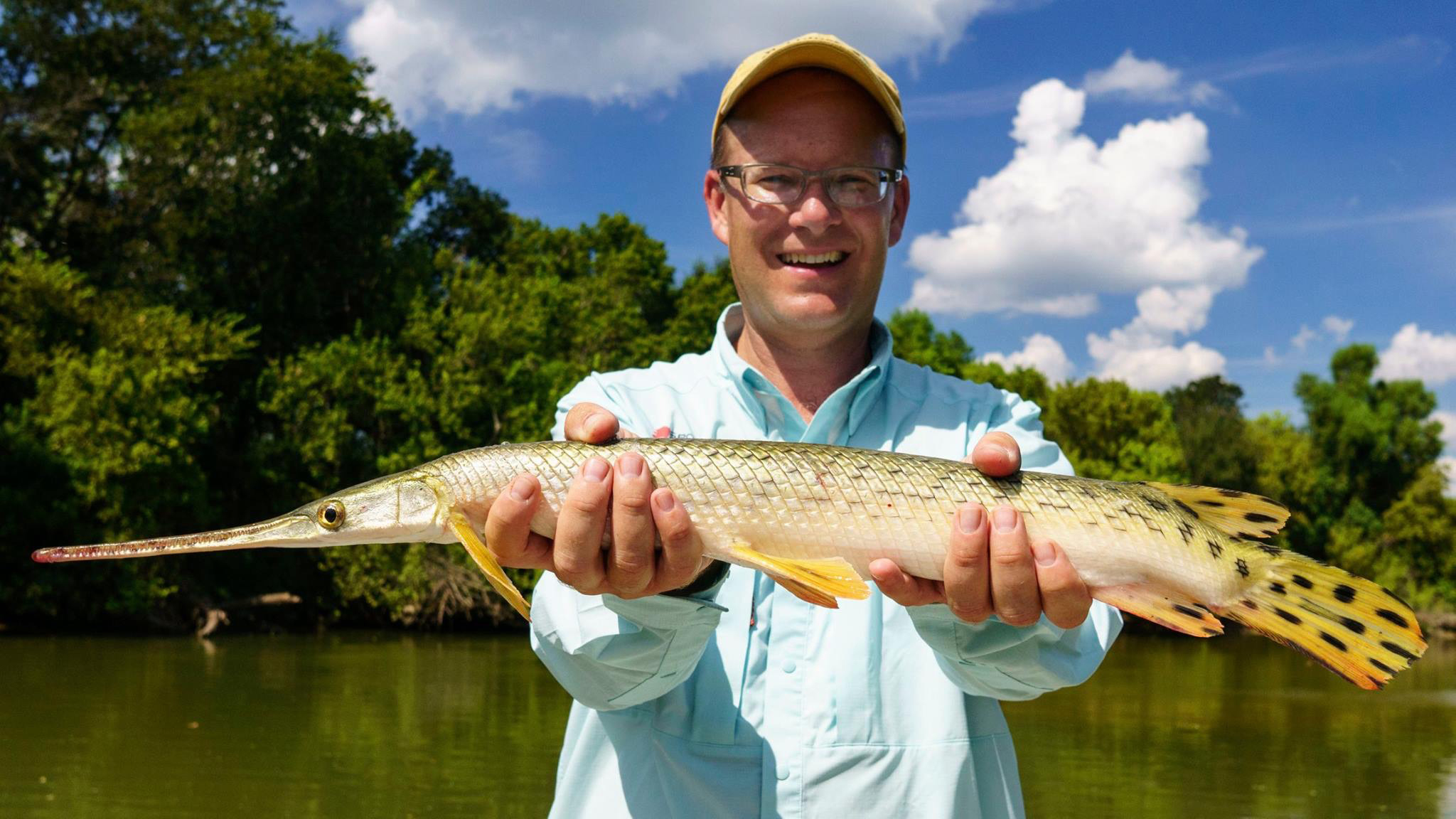Killifish: Surviving in an Elephant’s Footprint
Clown Killifish Epiplatys annulatus (c) Carnat Joel
by Andy Patel
Killifish are a group of unusually small and colourful fish that have evolved particularly robust egg casings. These casings prevent the embryos from drying out and some species survive for months, even years in dry mud. This has allowed killifish to colonise and survive in the smallest temporary pools, even in an elephant’s footprint. The sudden appearance of fish in fresh puddles has given rise to the phrase ‘It rains fishes’.
Because the pools may only be wet for a short time, some species can grow and mature extremely rapidly. The turquoise killifish (Nothobranchius furzeri) is capable of completing its lifecycle within 14 days of hatching. This remarkable factor has led to the species being used in research on ageing.
From a conservation point of view, it is easy to see that temporary water bodies can be particularly vulnerable to human disturbance and many species are under threat. Aquarists have collected and kept killifish for many years and pay particular attention to keeping records of where they were originally collected. By doing this and exchanging eggs between themselves they help ensure their survival in case of habitat destruction. The British Killifish Association (https://killis.org.uk/wp/) is one such group of aquarists who are hoping to co-ordinate their conservation efforts within Shoal.
Some may well ask how it is possible to keep wild fish and support conservation. It’s a fair question and one that deserves an answer. Many of the currently described killifish species are only known to science because of aquarists, who have travelled out to remote locations to collect them. Without knowing that a species exists it is not possible to conserve it and aquarists have contributed extensively to the scientific knowledge about these beautiful fish. They often return to those same areas in subsequent years to monitor how the habitats are coping. Aquarists also support many individual conservation projects in particular areas.
As we now know the effectiveness of such small projects can be limited, but collectively we can still make a difference. So, we are looking to increase awareness of conservation within the fishkeeping hobby to make it more sustainable and help ensure the survival of many of the over 1,000 killifish species in existence. Conservation and restoration of habitats is crucial, but where this isn’t immediately possible Killifish Associations hope that they can at least preserve captive populations so that future re-stocking is at least possible. Co-ordinating that effort with scientists, conservation organisations and public aquaria can help raise the profile of these small fish species.
Killifish are little gems found across much of Africa, The Americas and even southern Europe and Asia. They are deserving of our protection, as much as land animals.
To get an idea of how colourful they are, why not visit these two excellent sites:
http://www.itrainsfishes.net/content and http://www.itrainsfishes.net/content/. Run by people who collect, document and even describe new species. It’s a fascinating world, and another astonishing part of the Shoal.
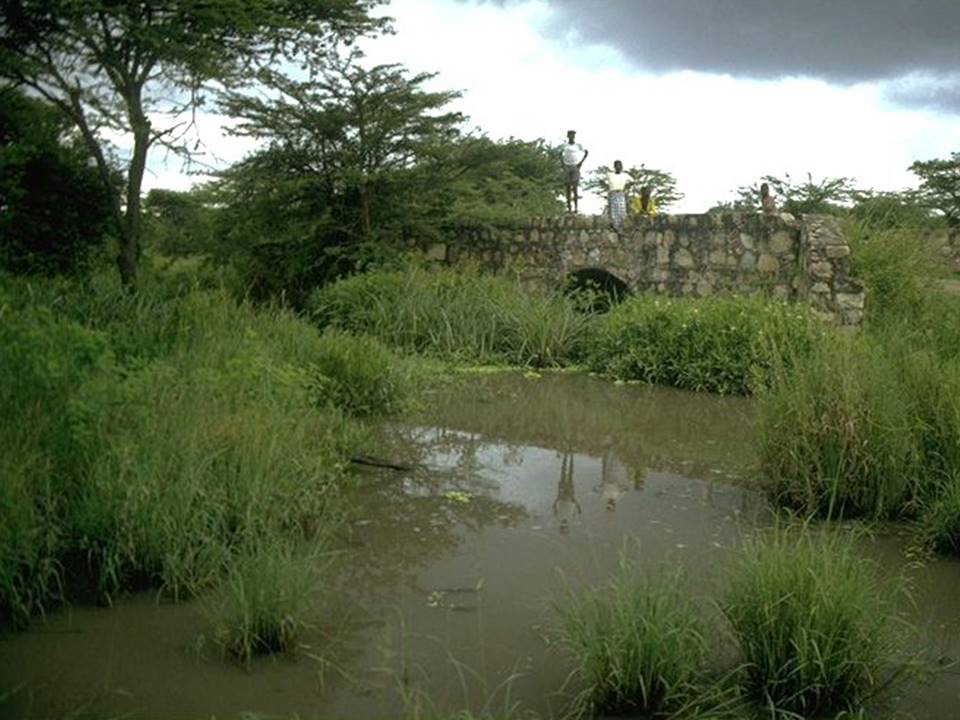
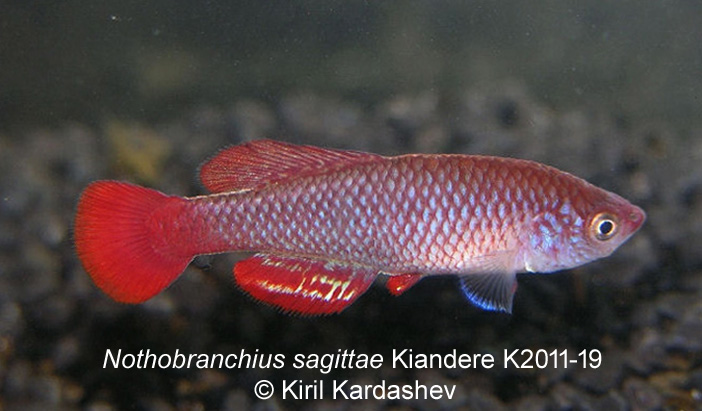
In 1993 enthusiasts from the British and American Killifish Associations ventured into a muddy pool in Tanzania to see whether any new species may be lurking under the thick grass. They found an undescribed Nothobranchius species’.
‘Twenty one years after entering the hobby the beautiful fish is finally named, after study by ‘citizen scientists’, as Nothobranchius sagittae. Finally recognised by the scientific world as a species it is evaluated by the IUCN in 2016 as endangered.

